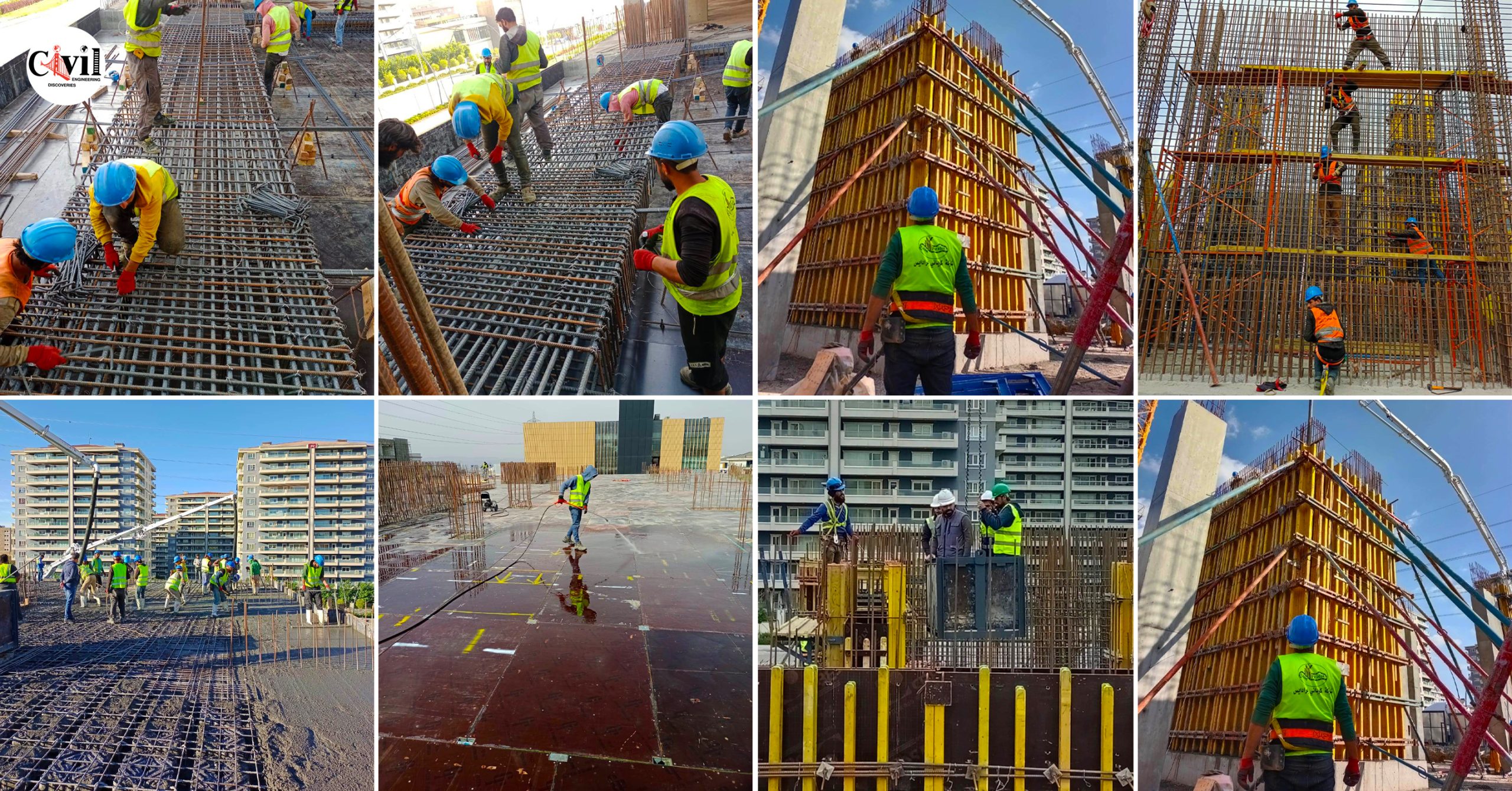Concrete is arguably the most widely used construction material in the world. It is produced from a mixture of cement, sand, gravel, and water through a process known as a hydration reaction. In its fresh state, concrete can be poured into different molds and forms to achieve the desired shape. This is one of the reasons why it is an attractive construction material.
In its hardened state, concrete is very good in compression, but weak in tension. In order to augment this inherent weakness of concrete in tension, steel reinforcement is usually introduced to take up the tensile stresses. Any structure made up of steel reinforcement embedded in concrete to form a load-resisting composite is known as a reinforced concrete structure. The process of specifying the member sizes of concrete and the area of steel required to ensure the good performance of a structure under load is known as reinforced concrete design.
The key to the excellent performance of reinforced concrete structures lies in the complementary action of concrete and steel. This composite but complementary activity is highlighted in the Table below;
Property | Concrete | Steel |
Tensile strength | Poor | Good |
Compressive strength | Good | Good (but slender members will buckle) |
Shear strength | Fair | Good |
Durability | Good | Fair (will corrode if unprotected) |
Fire resistance | Good | Poor (will lose strength at elevated temperature) |
By looking at the table above, you can see that all the desirable properties listed will be achieved if the two materials are combined.
Click Here To See 28+ Images of RCC Concrete During the Construction































